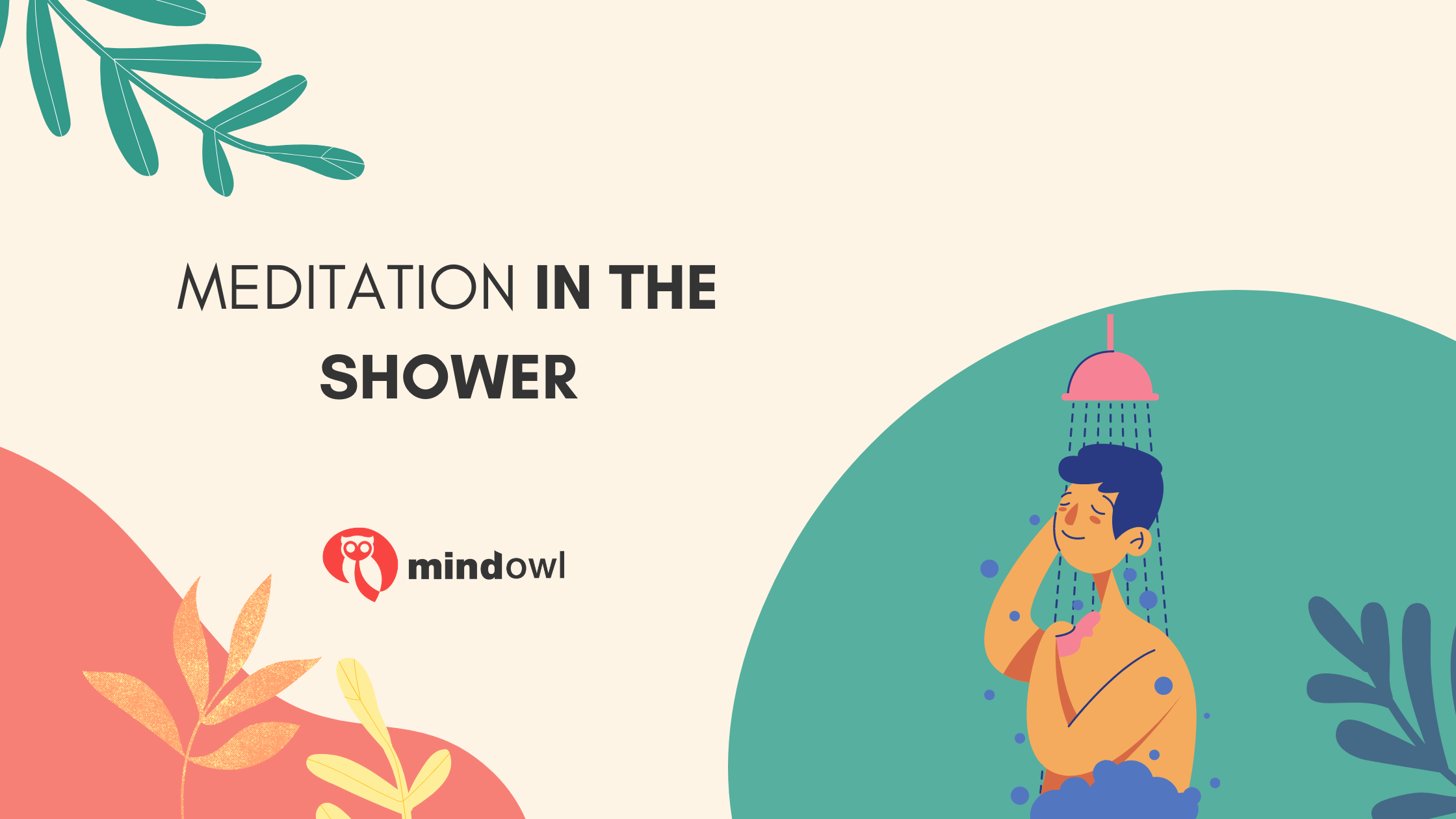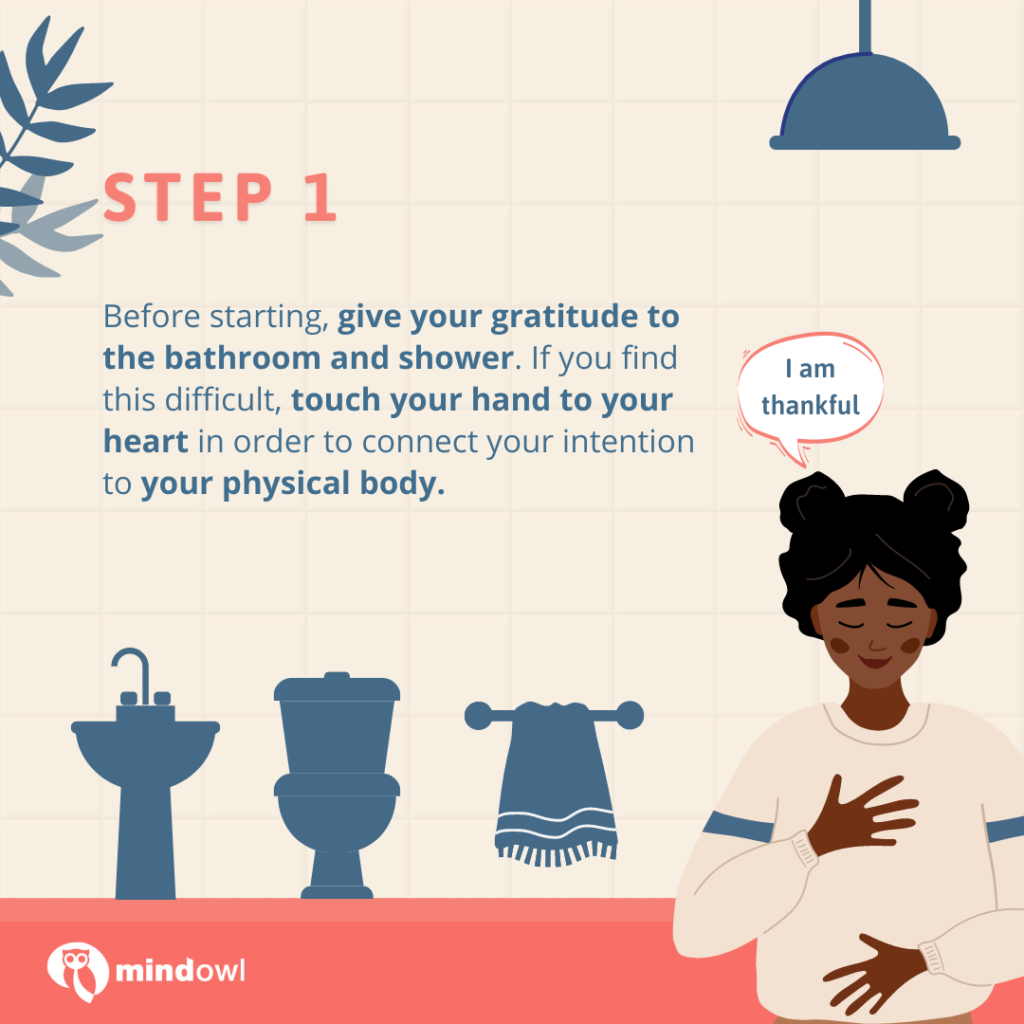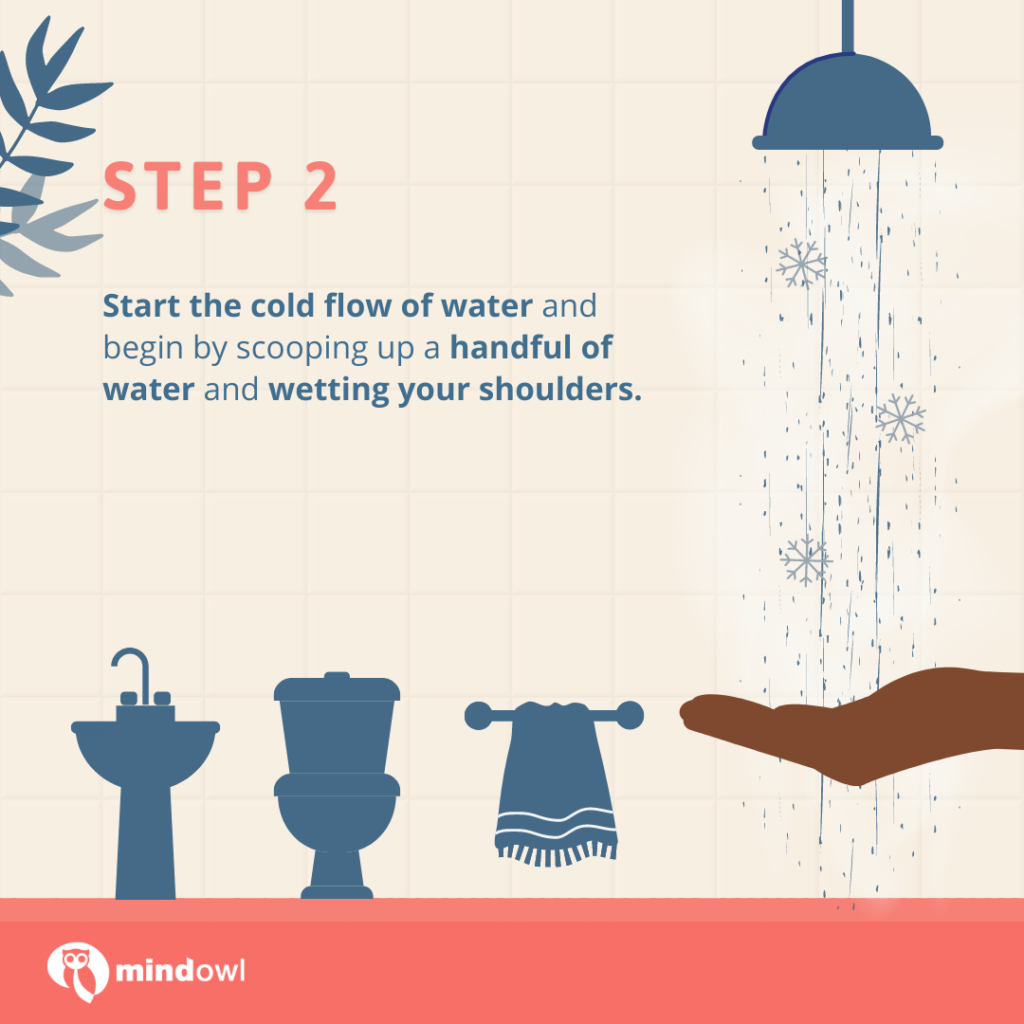Many people think that meditation is something that should be done alone in a quiet room or outdoors. However, meditation and mindfulness can also be practised throughout a normal day, at various different points. One of the best and most common times to meditate is in the shower.
If you’re like most people, you probably sometimes struggle to find the time for meditation. The thing is, there are actually loads of opportunities to practise each day. It’s likely that when you’re in the shower, you don’t really think too much about what you’re doing. Making an effort to practise mindful meditation during this daily activity will help you realise that it’s actually a perfect time to centre and ground yourself for the day ahead.
In this article, we are going to explore what meditation in the shower is, explain why it might benefit you, and explore how you can incorporate it into your daily life.
Can you meditate in the shower?
When we’re in the shower, our minds tend to wander unharnessed, as we are totally engrossed in our own personal world. Sometimes, we don’t even remember washing our hair or scrubbing our backs, but the smell of the soap and shampoo reminds us that we must have. So what if we could harness this time for ourselves, wash away our negative emotions and bring our focus back to the present moment to get closer to our true selves?
Shower meditation involves using the rush of water to wash away stress, tension, and anxiety from the body. You can meditate in the shower at any time of day, and it won’t take any longer than a normal shower would. This process helps promote greater calmness and peace of mind, because when you splash water on your face, your body believes that it is about to be submerged underwater, causing a reduction in heart rate and an increase in feelings of calmness. This is an instinctual response called the “Mammalian Diving Reflex”.
Pausing during your daily shower in order to practise mindfulness meditation is a great way to encourage intentional living and use your self-care routine as a chance for reflection and balance. This method can also be referred to as waterfall meditation, water meditation, or mind cleansing. So how exactly does the practice work?

How to Meditate in the Shower
In this section of the article, we’ll go over some simple ways to meditate in the shower. Before we get started, here are a few pointers to help you maintain the right frame of mind during your practice:
- If you find it difficult to stand in the shower for long periods, sit on a bench, stool or other soft object. While meditating, you should try to keep your back straight and avoid leaning forward as much as possible.
- Try to ensure you’re in a comfortable environment. If you can, switch off your phone, maybe light some candles or use ambient light, and pick up some essential oil shower gel, like lavender, ylang-ylang or bergamot.
- Set aside an appropriate amount of time for this practice. Don’t rush — this experience should be savoured.
- Set your intention before you go into your meditation; focus on clearing your mind, letting go of the worries of the day beginning or ending, and allowing yourself to enjoy the calm warmth of the water.
- While you turn the water on, set the temperature and water pressure, focus on grounding yourself in this moment through your senses. Listen to the sounds around you as the water starts. Feel the air in the room change temperature. Can you taste the steam in the air? Bring your awareness to these sensations in this moment to ground yourself.
Cold Shower Meditation
Usually, the intention of meditation is to search for an experience of awareness, calm and equanimity. One of the quickest ways to bring our mind into focus on the present moment is through the sensory experience of cold water on our skin. Cold showers are a great way of using this human reaction to our benefit.
In traditional practices, exposure to cold and heat is thought to cleanse us and restore balance within our mind, body and spirit. Although it might sound unpleasant, meditative cold showers are extremely effective; they can revitalise your senses and your body, encourage the release of dopamine and are proven to aid people suffering from depression.
Here’s a quick cold shower exercise to try at home.
- Before starting, give your gratitude to the bathroom and shower, being thankful that this space for you to carry out your meditation exists. If you find this difficult, touch your hand to your heart in order to connect your intention to your physical body.
- Start the cold flow of water and begin by scooping up a handful of water and wetting your shoulders.
- Now, with your back to the water, wet one shoulder first – preferably the right – and then the other.
- Then step back so your whole body is underwater.
- Make sure the water is covering your neck and shoulders — you might have to hunch your shoulders for this.
- Bring your focus to your breathing and remain in this moment.
- At the end of your session, after two to five minutes, bring forward gratitude for this moment of peace, clarity and equanimity.
Morning Shower Meditation
As you know, the best time for your daily meditation practice is the morning. So why not supercharge this prime time for meditation by introducing the powerful revitalising energy of a shower meditation? Bringing a mindful morning routine into your life will help you begin the day in a positive way, making you more likely to go about the day with a genuine sense of calm and positive energy.
Follow these simple steps for a highly effective mindful morning shower.
- Begin by taking some deep breaths.
- Once under the warm flow of the shower, bring your focus to the sensation of it rushing over your limbs, through your hair and trickling off your nose.
- Can you note how the warm water has relaxed and softened your muscles?
- Can you hear how the constant flow of the pattering water droplets soothes your mind, rests your thoughts and washes away negative energy, sensations and emotions?
- As you begin to scrub, bring your focus to the bubbly lather of the soap as it cleanses and moisturises your skin or massages your scalp. Can you smell the scent of the soap? Is it fruity, herbal or citrussy? Breathe in the scent evenly and deeply, feeling the smell relax your body further.
- Now bring your focus to the feeling of the skin of your palm running over the skin of your body, bring awareness to the intention of your movements.
- Don’t get frustrated if you feel your thoughts drifting — just gently guide your mind back through one of your senses like the sound of the water, the smell of the soap, or the sensation of massaging your body.
- As you come to the end of your practice, bring forward your gratitude for the cleanliness, calm and care you have given yourself.
In Conclusion
As I mentioned earlier, there are many benefits to meditating in the shower. It can be very relaxing and it helps you get out of your head, focus on yourself and reduce the noise of constant mindless activity. Using your showers as an opportunity for meditation can help you revitalise your entire body, reduce feelings of stress, regulate your emotions and clear your mind, ultimately bringing you to a calmer state and closer to your true essence.
We hope this article has given you the tools you need to start successfully meditating in the shower. If you want more tools to help you on your journey towards a more mindful life, join our online community to gain access to our bespoke courses and resources.
Frequently asked questions
Q. Should I meditate in the shower?
A. Many experienced meditators will tell you to meditate at a time that is most beneficial for you, a time that fits in with your daily routine and allows your mind to rest. But ideally, the best time to meditate is when you first wake up and start getting ready for the day; therefore, combining meditation with an existent habit of showering and bathing upon waking up just makes complete sense. The positive emotions, feelings and experiences that we gain during these moments can then be enjoyed throughout the day.
Q. Is it OK to meditate in the bath?
A. Long soaks in a hot bath could help with depression as much as physical exercise. Even two afternoon baths a week improve mood in a modest but persistent way. People with depression often have problems with normal circadian rhythms of temperature, since raising their body temperature in the afternoon helps restore them. Routine baths where you are fully submerged in warm water could help regulate your system and help your mind prepare and repair for days ahead
Q. What is a mindful shower?
A mindful shower is the practice of using your shower routine to mindfully refresh your mind by focusing your attention on your current intentions, movements and feelings. You are not simply clearing your mind, but deliberately focusing your attention on your surroundings. Take a moment to set the temperature of your shower before stepping in. You will feel more refreshed when you focus on what you’re doing at the moment instead of worrying about what you need to do when you get out, or what you should have said at work yesterday. Allow your mind to rest so that when you get out you can handle more!
MindOwl Founder – My own struggles in life have led me to this path of understanding the human condition. I graduated with a bachelor’s degree in philosophy before completing a master’s degree in psychology at Regent’s University London. I then completed a postgraduate diploma in philosophical counselling before being trained in ACT (Acceptance and commitment therapy).
I’ve spent the last eight years studying the encounter of meditative practices with modern psychology.








